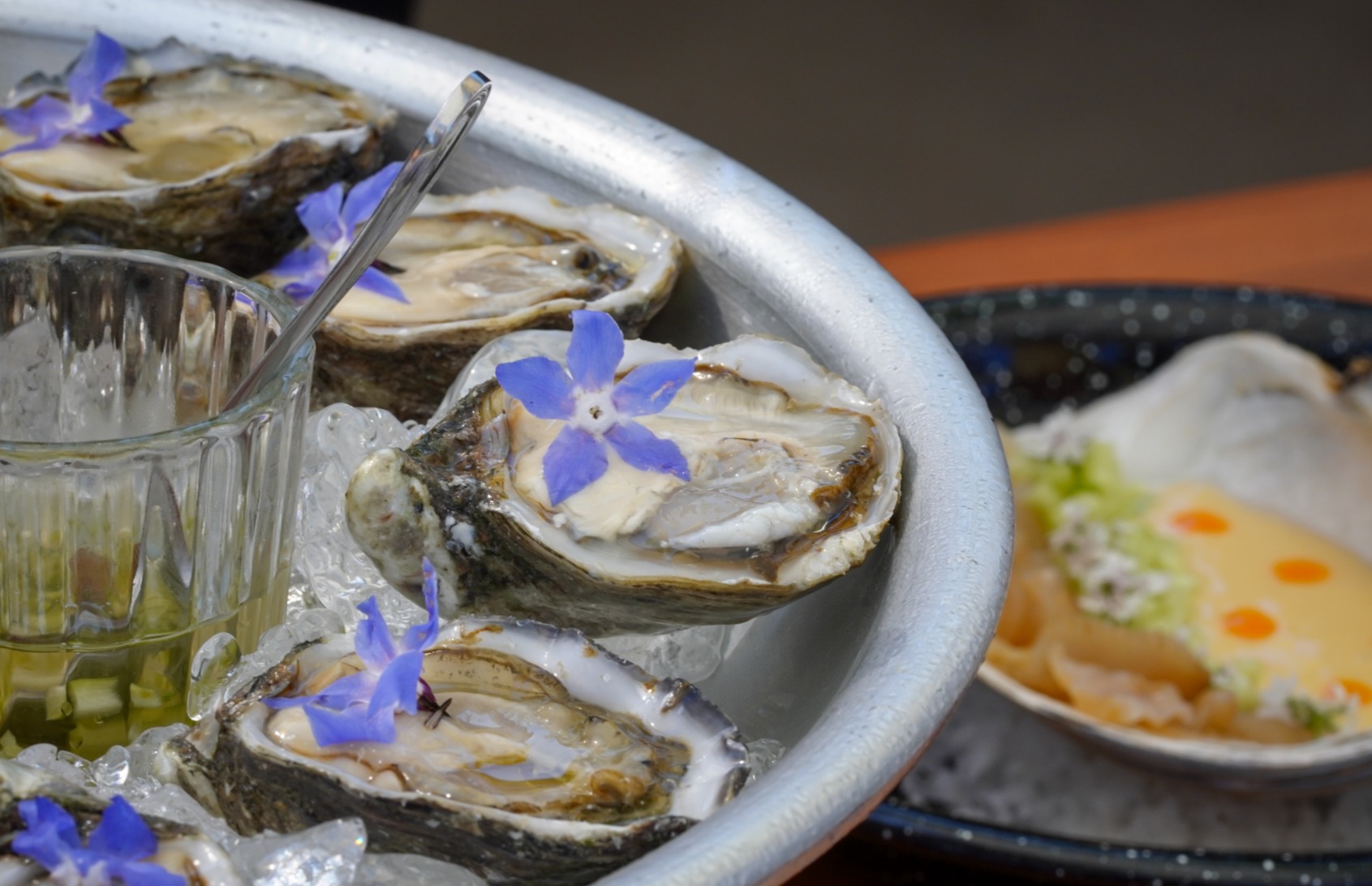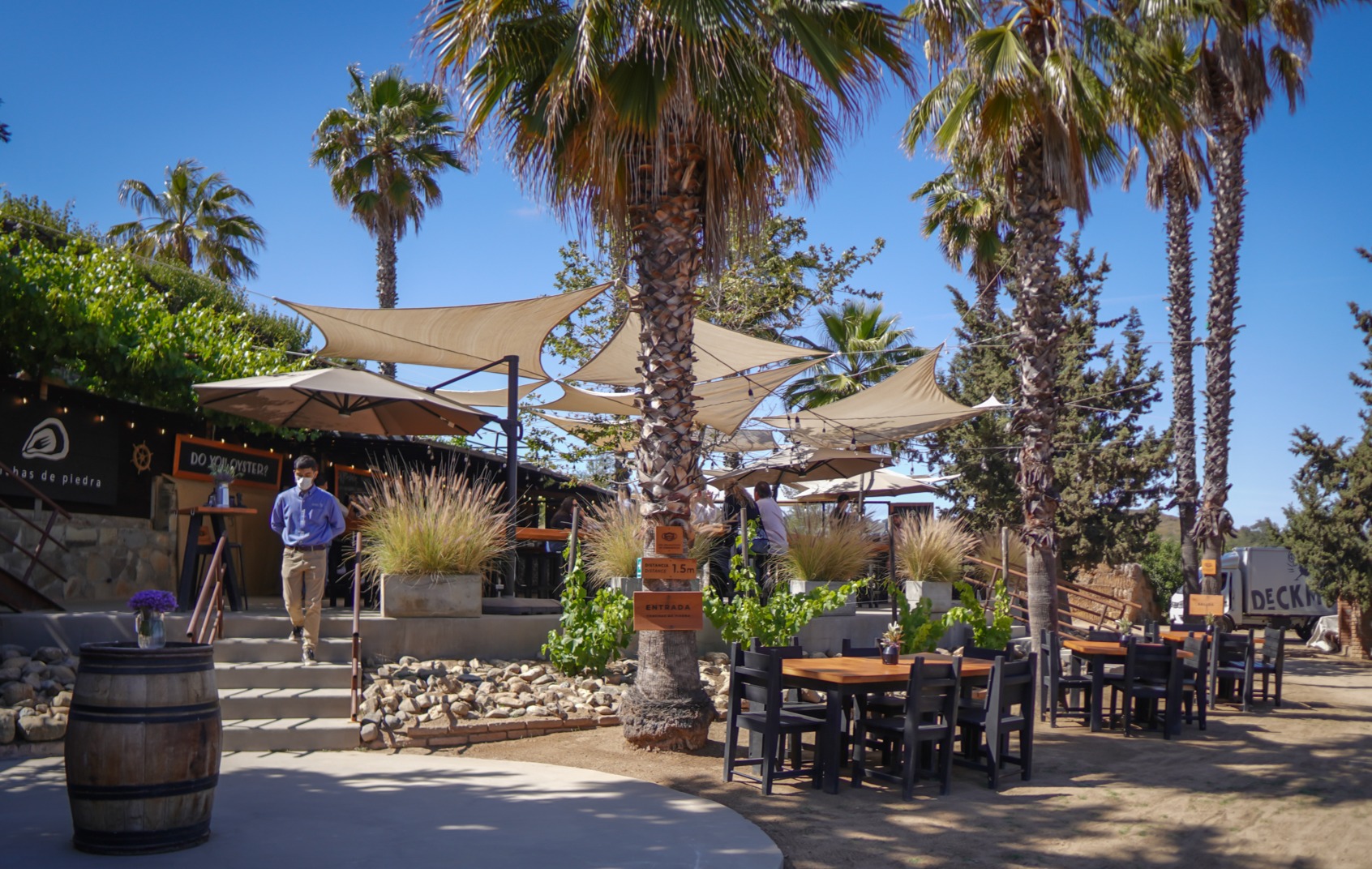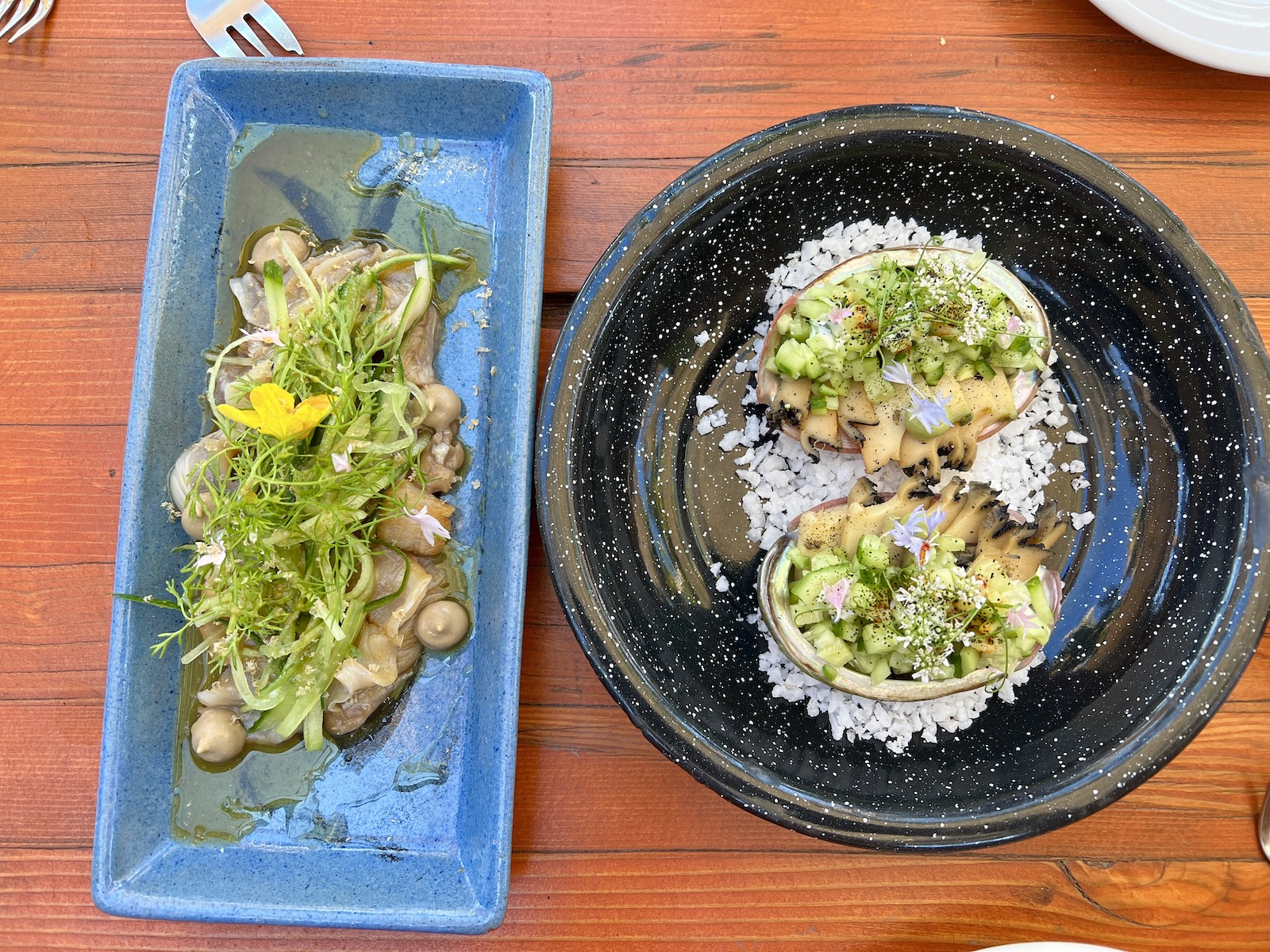NORTH STARS:
Waste Management
Carbon Footprint
Certifications
“Knowing where, how, and what is coming out of the ocean is key to our operations.“
The Azure Road Take
Chef Drew Deckman’s casual shellfish and sparkling wine restaurant Conchas de Piedra received a Michelin star and Michelin Green star in Mexico’s inaugural Michelin guide this year. The hyper-seasonal menu focuses on seafood and vegetables, with little to no meat. Raw and roasted oysters are always a hit, and on a recent visit, I enjoyed geoduck tiradito, plus abalone aguachile, mangrove cockle tostada and a daily special of chocolate clams over zucchini “noodles” with savory tomato sauce. Several vegetarian and vegan dishes are available as well, and there’s a tasting menu option or seafood plat royale if you are feeling indecisive.

Fresh oysters at Conchas de Piedra. Image courtesy of La Ruta VCC.
Sustainability Chops
Deckman sources nearly 85% of the fruits and vegetables served at Conchas, while mollusks, including geoduck, oysters, abalone, chocolate clams, and mangrove cockles, are responsibly grown or foraged locally in Baja California. “We are extremely conscious of sourcing,” Deckman says. “Knowing where, how, and what is coming out of the ocean is key to our operations.” Deckman is a member of the Blue Ribbon Task Force, the culinary arm of Seafood Watch from the Monterey Bay Aquarium.
Repurposed shells supply simple but inviting decor at Conchas. They’re also found caged in along the kitchen counter, repurposed as erosion control, crushed for chicken feed or used as a calcium supplement in fertilizer in the vineyard and farm. Their dedication to serving regional, responsibly grown ingredients minimizes the restaurant’s carbon footprint, earning it a Michelin Green Star for excellence in sustainable gastronomy.
“Credentials are not important to me,” Deckman says, adding “it’s the action that is.” While organic certification proves cost prohibitive for his farm, they do practice regenerative farming and many biodynamic principles. Wastewater finds renewed purpose as irrigation water for vineyards.
The Bite
U.S. chefs rarely serve geoduck in restaurants, while the Chinese consider it a rare delicacy. In other words, Americans rarely encounter this mollusk on menus. Most geoduck harvested in Mexico’s Baja California ends up exported to China. Thus, I’d never tried it in Mexico before dining at Conchas de Piedra. Now, I look for it every time I cross the border. The thinly sliced raw meat has a tender yet satisfying snap, both texturally and after dressed tableside with a sweet and sour sauce. While most bivalves are soft and fairly chewy, geoduck has a distinct toothsome crunch uplifted by the light, bright citrus-soy ponzu.
Also fantastic, the abalone aguachile, served in its own shell with brunoised cucumber, garlic aioli, comes with a sidecar of smoked chiltepin aguachile to pour as you see fit. Aguachile is a Mexican dish that translates as “chili water,” consisting of raw seafood submerged in a spicy liquid lime juice seasoning, similar to a spicy ceviche. I tried one slice of abalone on its own to taste the purity of its subtle sweet flavor before drenching the rest in tangy chili water. If you can’t make it to Mexico, Deckman serves the same oysters and abalone at his newest and first U.S. restaurant in San Diego, 31THIRTYONE by Deckman’s.

The exterior of Conchas de Piedra. Image courtesy of La Ruta VCC.
Origin Story
“I really enjoy serving ‘ugly seafood’,” Deckman says. “Some of the most daunting looking animals are the tastiest.” Geoduck is endemic starting in southern Alaska down the west coast to the Baja Peninsula, and is available to harvest year-round. “The individuals change in size and texture based on the merroir where they grow.” (The concept of merroir is similar to terroir, but from the sea.) Deckman works with a diver fishery where the diver removes each clam, one by one, from the ocean bottom.
“We serve the siphon raw. We cook the intestines and gonads and make a mousse, similar to liver mousse,” he says. “These techniques allow us to utilize 100% of the organism, and we serve it in its own shell,” he explains.
Restaurant Vibe
Serving a menu of sparkling wine and small seafood plates, Conchas de Piedra offers an ideal light lunch stop during a day of wine tasting in Valle de Guadalupe. Diners perch on stools at long wooden high top communal tables overlooking the Casa de Piedra vineyards and Guadalupe Mountains, with a front row seat to the open kitchen. Watch oysters roasting over open flames and chefs shucking oysters to order on a pleasant sunny day, given its outdoor seating only. With the last reservation at 6 pm, Conchas de Piedra suits those inclined to a pre-dinner snack or aperitif.

Amber Gibson is an award-winning journalist specializing in travel, food, wine and wellness. Her work has appeared in The Telegraph, Chicago Tribune, NPR, Condé Nast Traveler, Travel + Leisure, Food & Wine, Robb Report, Saveur, Bon Appétit, Fodor’s and Hemispheres. She graduated as valedictorian from Northwestern University’s Medill School of Journalism and received a fellowship to attend the 2017 Wine Writer’s Symposium at Meadowood Napa Valley. Follow Amber on IG @amberyv.



